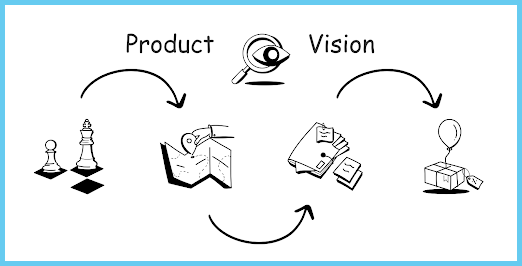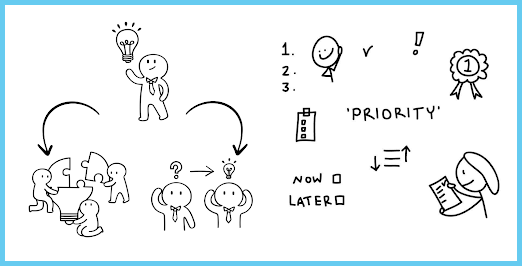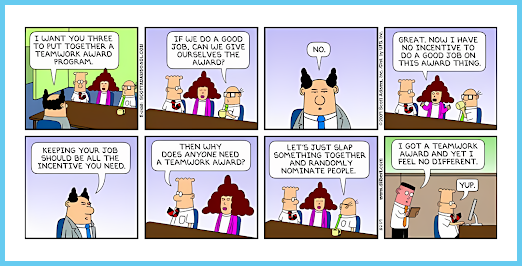

Zero to MVP: A Roadmap for Product Managers
As a product manager working in the fast-paced world of SaaS companies, I have experienced firsthand the exhilarating journey of taking an idea from zero to a Minimum Viable Product (MVP). The role of a product manager is multifaceted, requiring a deep understanding of the market, the ability to collaborate with cross-functional teams, and the skills to prioritize and iterate on features. In this blog, I will guide you through a comprehensive roadmap for product managers, outlining the essential steps and strategies to navigate the Zero to MVP journey successfully. Let’s dive into the exciting world of product management and discover how to turn ideas into reality, one milestone at a time.
MVP unboxed: Decoding the minimum viable product
In the realm of product development, a Minimum Viable Product (MVP) is the distilled essence of your idea, stripped down to its core functionalities. It serves as a preliminary version of your product that showcases its fundamental value proposition. The concept behind an MVP is to deliver the bare minimum features required to meet your customers’ needs and provide a tangible experience of your product.
For instance, let’s consider a hypothetical mobile app designed to connect fitness enthusiasts. An MVP for this app could include basic features like user registration, profile creation, and the ability to search and connect with other users. By focusing on these core functionalities, you can gather valuable feedback from early users, validate your assumptions, and refine your product in subsequent iterations. Remember, an MVP is not about perfection; it’s about delivering value quickly and iteratively improving based on user feedback.
Delving into customer dynamics: Understanding the pulse of the market
In the journey of creating a successful Minimum Viable Product (MVP), one of the critical steps for product managers is gaining a deep understanding of the market. This process involves comprehensive research, analysis, and staying attuned to the ever-evolving dynamics of the industry. By understanding the market, product managers can make informed decisions and shape the direction of their MVP effectively.
To understand the market, product managers embark on a multi-faceted exploration that encompasses three key sub-sections:
1. Conducting market research:
Thorough market research is the foundation of understanding the landscape in which your product will compete. It involves gathering data, analyzing industry trends, and studying customer behaviors. Through market research, product managers gain insights into customer needs, pain points, and emerging market opportunities. This knowledge forms the bedrock for developing an MVP that addresses real user demands.
2. Identifying target audience and user needs:
Within the broader market, product managers need to identify their specific target audience and understand their unique needs. By creating detailed user personas and conducting user interviews, product managers gain valuable insights into the preferences, motivations, and pain points of their target users. This understanding enables them to tailor the MVP’s features and functionalities to meet the specific requirements of their intended audience.
3. Analyzing competitors and market trends:
A thorough analysis of competitors and market trends is essential for product managers. By studying the competitive landscape, product managers gain insights into existing products, their strengths, weaknesses, and unique selling propositions. This analysis helps identify gaps in the market that the MVP can address, as well as potential differentiators that can make the product stand out.
Crafting a compelling product vision: The north star for MVP success
In the journey from zero to a Minimum Viable Product (MVP), product managers hold the reins in shaping a clear and compelling product vision. By defining the product vision, product managers set the course for development, aligning teams and stakeholders towards a common goal. This crucial step involves three key aspects:
1. Setting clear goals and objectives:
Setting clear goals and objectives is the foundation upon which the product vision is built. Product managers need to establish specific, measurable, achievable, relevant, and time-bound (SMART) goals that guide the MVP development process.
For example, a goal could be to achieve 10,000 active users within the first six months of launching the MVP. Clear goals provide a direction for decision-making, resource allocation, and prioritization throughout the product journey.
2. Creating user personas and user stories:
Understanding the target users is essential to craft an MVP that resonates with their needs and aspirations. Product managers create user personas, which are fictional representations of the ideal customers, based on research and insights. These personas capture demographic details, pain points, motivations, and behaviors, allowing product managers to empathize with their target audience. Building upon the user personas, product managers create user stories that outline specific scenarios, actions, and desired outcomes.
For instance, a user story could be: “As a busy professional, I want a mobile banking app that enables me to easily transfer funds and pay bills on the go.” User stories bring the user perspective to the forefront and serve as guiding principles for feature development.
3. Establishing key performance indicators (KPIs):
To measure the success and impact of the MVP, product managers establish Key Performance Indicators (KPIs). KPIs are quantifiable metrics that reflect the achievement of specific business objectives.
For instance, a KPI could be the conversion rate of free trial users to paying customers. By defining KPIs, product managers can track progress, identify areas for improvement, and make data-driven decisions. KPIs also ensure that the product remains aligned with the overall business strategy.
Ideation strategies and feature prioritization: Building the MVP blueprint
In the journey of bringing an innovative Minimum Viable Product (MVP) to life, the phase of ideation and prioritization sets the stage for success. Product managers play a critical role in this phase, driving the generation of ideas, analyzing their potential, and strategically prioritizing features. Let’s delve into the three key aspects of ideation and prioritization:
1. Generating ideas and brainstorming:
Ideas are the lifeblood of any successful MVP. Product managers foster an environment of creativity and collaboration to generate a multitude of ideas. Through brainstorming sessions, team discussions, and even input from stakeholders, a rich pool of ideas emerges. The key is to encourage a free flow of thoughts, without judgment, allowing for both wild and practical ideas to surface. By embracing a diverse range of perspectives, product managers can uncover unique solutions and untapped opportunities.
2. Utilizing techniques like SWOT analysis and value proposition canvas:
To evaluate and refine ideas, product managers leverage strategic techniques like SWOT (Strengths, Weaknesses, Opportunities, Threats) analysis and the Value Proposition Canvas. SWOT analysis helps identify the internal strengths and weaknesses of the MVP idea, as well as external opportunities and threats posed by the market and competitors. The Value Proposition Canvas helps assess how well the MVP addresses customer needs and creates value compared to alternatives. These techniques provide a structured framework for analyzing and refining ideas, ensuring that only the most promising ones proceed to the next stage.
3. Prioritizing features and creating a product roadmap:
With a pool of ideas at hand, product managers embark on the crucial task of prioritizing features. By considering factors such as customer value, business impact, technical feasibility, and market demand, they strategically decide which features will make it into the MVP. Through careful evaluation and data-informed decision-making, product managers ensure that the selected features align with the product vision and contribute to the overall value proposition. They then create a product roadmap that outlines the sequence and timelines for implementing these features, providing a clear direction for the development team.
Building a cohort of experts for cross-functional MVP delivery
Building a cross-functional team is a crucial step for product managers. By assembling a team with diverse expertise and fostering effective collaboration, product managers set the stage for seamless development and optimal outcomes. Let’s explore the three key aspects of building a cross-functional team:
Roles and responsibilities of product managers:
Product managers play a pivotal role in orchestrating the MVP development process. They act as the glue that binds together the various team members and stakeholders. Product managers define clear roles and responsibilities, ensuring that each team member understands their contributions to the MVP’s success. They provide guidance, support, and leadership, aligning the team towards a common vision and objectives. By clarifying roles, product managers facilitate smooth coordination and accountability within the cross-functional team.
1. Collaboration with designers, engineers, and stakeholders:
Effective collaboration between product managers, designers, engineers, and stakeholders is key to delivering a successful MVP. Product managers collaborate closely with designers to translate user needs and insights into compelling user experiences. They work hand in hand with engineers to ensure the technical feasibility and efficient implementation of features. Additionally, product managers actively engage with stakeholders, including marketing, sales, and customer support teams, to gather feedback, align strategies, and ensure a holistic approach to product development. Through this collaborative effort, the cross-functional team leverages each other’s expertise, leading to a well-rounded MVP that meets user expectations.
2. Effective communication and agile methodologies:
Clear and open communication is paramount for effective cross-functional team collaboration. Product managers foster an environment of transparency and open dialogue, ensuring that information flows smoothly across all team members. They facilitate regular team meetings, stand-ups, and feedback sessions to keep everyone aligned and engaged. Agile methodologies, such as Scrum or Kanban, provide a framework for iterative development, frequent feedback loops, and adapting to changing requirements. Product managers guide the team in implementing agile practices, enabling them to deliver high-quality MVP increments within set timelines.
Iteration in action: Prototyping the path to MVP excellence
This phase allows product managers to refine their ideas, gather valuable user feedback, and strike the delicate balance between speed and quality. Let’s delve into the three key aspects of prototyping and iterative development:
1. Rapid prototyping and user testing:
Rapid prototyping enables product managers to bring their MVP concepts to life quickly. By creating mockups, wireframes, or interactive prototypes, they can visualize the user experience and validate their assumptions. These prototypes serve as a tangible representation of the product idea, allowing for early user testing and feedback. Product managers conduct usability tests, gather insights, and iterate on the design and functionality based on user reactions. This iterative approach ensures that the MVP is user-centric and aligns with user needs and expectations.
2. Continuous iteration based on user feedback:
User feedback is a goldmine of insights for improving the MVP. Product managers actively seek feedback from early users, whether through surveys, interviews, or feedback sessions. They analyze and distill this feedback to identify pain points, areas for improvement, and opportunities to enhance the product’s value proposition. Based on this feedback, product managers iterate on features, refine the user experience, and address any usability issues. Continuous iteration ensures that the MVP evolves and matures with each cycle, resulting in a product that resonates with users.
3. Balancing speed and quality in development:
The MVP journey is characterized by the need for speed, but without compromising quality. Product managers are responsible for striking the right balance between rapid development and maintaining high standards. They work closely with development teams to ensure that the iterative process is efficient, allowing for quick turnaround times while adhering to quality standards. Through effective project management, agile methodologies, and collaboration, product managers optimize the development process, ensuring that the MVP achieves a balance between speed, quality, and user satisfaction.
Metrics that matter: Empowering MVP success through measuring and analyzing data
By implementing analytics tools and metrics, monitoring user behavior and conversion rates, and making data-driven decisions for improvements, product managers can optimize their MVPs for success. Let’s explore the three key aspects of measuring and analyzing data:
1. Implementing analytics tools and metrics:
To gain valuable insights into user behavior and product performance, product managers implement analytics tools and define relevant metrics. These tools, such as Google Analytics or Mixpanel, provide a wealth of data on user interactions, engagement, and retention. Product managers establish key metrics aligned with their MVP goals, such as user acquisition, retention rates, or conversion rates. By tracking these metrics, product managers gain a comprehensive understanding of how users engage with the MVP and identify areas for improvement.
2. Monitoring user behavior and conversion rates:
Understanding how users interact with the MVP is vital for its success. Product managers closely monitor user behavior, analyzing how users navigate through the product, which features they use the most, and any bottlenecks they encounter. By examining conversion rates, product managers gain insights into the effectiveness of user onboarding, user experience, and the overall value proposition. This data informs product managers about user satisfaction, identifies pain points, and reveals opportunities for enhancing the MVP.
3. Making data-driven decisions for improvements:
Data-driven decision-making is the cornerstone of optimizing the MVP. Product managers leverage the insights obtained from data analysis to make informed decisions about feature enhancements, UX/UI improvements, or even pivots in the product strategy. For example, if data shows that a particular feature has low user engagement, product managers can iterate on it or consider removing it altogether. By embracing a data-driven approach, product managers ensure that improvements are based on evidence, increasing the chances of delivering an MVP that meets user needs and expectations.
Launching with impact: Driving success through validation and iteration
Product managers play a crucial role in preparing for the MVP launch, gathering user feedback and validation, and iterating and scaling the product based on feedback. Let’s explore the three key aspects of the launch and validation phase:
1. Preparing for the MVP launch:
Preparing for the MVP launch involves meticulous planning and execution. Product managers work closely with development teams, designers, and other stakeholders to ensure that the product is ready for the market. They conduct comprehensive quality assurance testing to identify and address any bugs or issues. Additionally, product managers define the go-to-market strategy, considering factors such as pricing, distribution channels, and marketing campaigns. By laying a solid foundation and fine-tuning the product, product managers ensure a smooth and impactful launch.
2. Gathering user feedback and validation:
User feedback and validation are invaluable in shaping the success of an MVP. Product managers actively engage with early adopters and target users to gather feedback on their experience with the MVP. This can be done through surveys, interviews, or user testing sessions. By listening to user perspectives, product managers gain insights into what works well and what needs improvement. User validation is crucial for verifying that the MVP meets user expectations and addresses their pain points. This feedback and validation process allows product managers to iterate and refine the product based on real user insights.
3. Iterating and scaling the product based on feedback:
Based on user feedback and validation, product managers initiate an iterative process of refining and enhancing the MVP. They prioritize and implement changes, focusing on addressing critical user needs and pain points. This iterative approach ensures that the product evolves and adapts to meet user expectations, increasing its chances of success in the market. As the product gains traction and user base, product managers work on scaling the product, ensuring that it can handle increased demand and usage.
Post-launch strategies to propel your MVP forward
Once a Minimum Viable Product (MVP) is launched, the journey doesn’t end there. Product managers employ post-launch strategies to ensure continued success and drive the product forward. This phase involves monitoring and analyzing product performance, providing customer support and bug fixing, and focusing on continuous improvement and feature expansion. Let’s explore these three key aspects of post-launch strategies:
1. Monitoring and analyzing product performance:
After the MVP launch, product managers closely monitor product performance using various analytics tools and metrics. They track key performance indicators (KPIs) such as user engagement, conversion rates, and customer feedback. By analyzing this data, product managers gain insights into how the product is performing in the market. This information helps identify areas of strength, areas for improvement, and emerging trends. By continuously monitoring and analyzing product performance, product managers can make informed decisions to optimize the product and enhance its success.
2. Customer support and bug fixing:
Providing excellent customer support is essential for maintaining customer satisfaction and loyalty. Product managers ensure there is a robust customer support system in place, including channels for users to report issues, ask questions, or provide feedback. They work closely with support teams to address customer inquiries promptly and efficiently. Additionally, product managers prioritize bug fixing and release regular updates to resolve any issues that arise post-launch. By addressing customer concerns and fixing bugs in a timely manner, product managers foster positive user experiences and build trust in the product.
3. Continuous improvement and feature expansion:
Post-launch, product managers focus on continuous improvement and feature expansion to keep the product competitive and aligned with customer needs. They gather user feedback, conduct market research, and analyze industry trends to identify opportunities for enhancement. Based on these insights, product managers prioritize and plan iterative development cycles to add new features and improve existing ones. This iterative approach ensures that the product remains relevant and provides increasing value to users over time. By continuously iterating and expanding the product’s features, product managers drive growth and secure long-term success.
Leveraging DronaHQ, a low code platform for rapid MVP development
DronaHQ is a powerful low code platform that empowers product managers to accelerate MVP development. With its intuitive visual interface, pre-built components, and seamless integrations, DronaHQ enables rapid prototyping, iterative development, and efficient collaboration.
Here’s why 100s of PMs choose us to build their MVP quickly:
Drag and drop support
With the drag-and-drop functionality offered by DronaHQ, product managers can effortlessly build MVPs. No coding is required. Simply select and drag components, dropping them onto the canvas. This user-friendly feature streamlines the development process, empowering product managers to create interactive prototypes and iterate quickly, bringing their ideas to life with ease.
20+ Ready app templates
Get a wide range of ready-to-use app templates, saving product managers valuable time and effort. Choose from a diverse collection of templates for various industries and use cases, such as admin panels, project management, or customer support. These templates provide a solid foundation, enabling product managers to quickly customize and tailor the MVP to meet specific business needs, accelerating the development process.
Easy backend configuration
Simplify backend configuration with ready-to-use databases like MySQL, MongoDB, PostgreSQL, Google Sheets, and third-party connectors such as Twilio, Gmail, SendGrid, and many more. No need to worry about complex setup or integration challenges. Easily configure backend services and APIs with a few clicks, empowering product managers to effortlessly integrate, scale, and extend the functionality of their MVPs.
Automation as an add-on
With scheduled-based triggers, tasks can be automated at specific times or intervals. Additionally, webhook-based triggers enable seamless integration with external systems, triggering actions based on real-time events. Boost efficiency and eliminate manual effort by configuring intelligent automation workflows within your MVP using DronaHQ.
Role-based access control
With role-based access control, product managers have granular control over user permissions. Assign specific roles to team members, granting them appropriate access levels. Ensure data security and maintain confidentiality by defining who can view, edit, or manage specific features or data within the MVP.
Self-hosting
In just a single click, effortlessly deploy a secure self-hosted version of DronaHQ within your infrastructure. Seamlessly connect to your trusted data sources and accelerate app and tool development at an impressive pace.
Sign up for DronaHQ and start building your MVP today!








